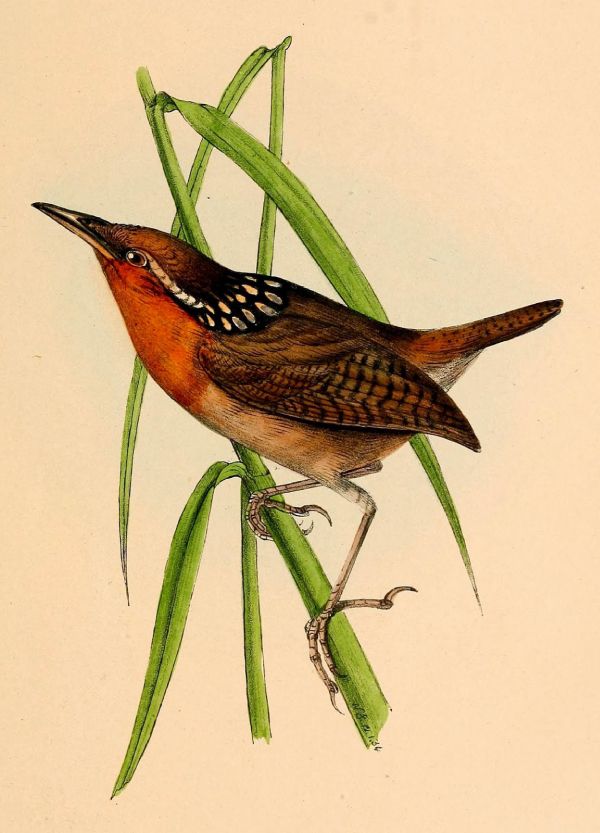
Musician wren (Cyphorhynus arada)
Last year a number of (Dutch) newspapers published a news item with a title like 'Brazilian bird sings a song of Mozart-level quality'. Several friends send me links via the social media (Thanks! And keep on doing that!) because of my interest in what makes us musical animals. Was this striking new evidence? Or another case of anthropomorphism?
Well, let's first listen to a recording of the bird under discussion: the musician wren (Cyphorhinus arada).
Many studies on the origins of music concern the question of what defines music. Can birdsong be considered music? In trying to answer this question, it is important to separate the notions of ‘music’ and ‘musicality’, with musicality being defined as a natural, spontaneously developing trait based on and constrained by our cognitive system, and music as a social and cultural construct based on that very musicality.
However, it is still a challenge to demarcate precisely what makes up this trait we call musicality. What are the cognitive mechanisms that are essential to perceive, make and appreciate music? Only when we have identified these fundamental mechanisms are we in a position to see how these might have evolved. In other words, the study of the evolution of music cognition is conditional on a characterization of the basic mechanisms that make up musicality.
Other studies are concerned with thinking about the question what we share with other animals in terms of musicality. And indeed, no matter how we would like it to be different, we are repeatedly reminded that we have more similarities to nonhuman animals than differences. However, we must be careful in calling birdsong music. We make this mistake more often. We, the human listeners, perceive the sounds made by songbirds as music. Whether these other animals also do that is unclear. And that makes a world of difference.
The study mentioned about a week ago in the Volkskrant was published in the Journal of Interdisciplinary Studies, a relatively new online journal promoting collaborations between the humanities and the sciences (N.B. dated Spring 2012).
If you read the paper, you will see that the authors confirm earlier findings that were discussed on this blog as well. For instance, the study that appeared in Animal Behavior (Araya-Salas, 2012) on the song of a nightingale wren, a species belonging to the same family as the musician wren. In that study ecologist Marcelo Araya-Salas (New Mexico State University) shows that the resemblance between a nightingale wren's song and music is nothing more than a coincidence. In the Doolittle & Brumm (2012) study similar results are reported. They also conclude that it is because 'human listeners from a variety of musical cultures are used to hearing these intervals as frames or anchors, we are likely to perceive many passages of musician wren songs not as series of disjunct notes but as musical units.' (Doolittle & Brumm, 2012:80).
Despite the beauty of birdsong, it’s again an example that when we call something music we’re projecting our own biases. Nothing wrong with that at all, but good to realize.
Nevertheless, from a scientific perspective, one way of avoiding this common pitfall is to focus on the actual, far more challenging question: is it music to them? More on that later…
Doolittle, E. & Brumm, H. (2012). O Canto do Uirapuru: Consonant intervals and patterns in the song of the musician wren. Journal of Interdisciplinary Music Studies, 6 (1), 55-85. [online advance publication 15 October 2013]
Araya-Salas, M. (2012). Is birdsong music? Evaluating harmonic intervals in songs of a Neotropical songbird Animal Behaviour, 84 (2), 309-313. doi:10.1016/j.anbehav.2012.04.038


